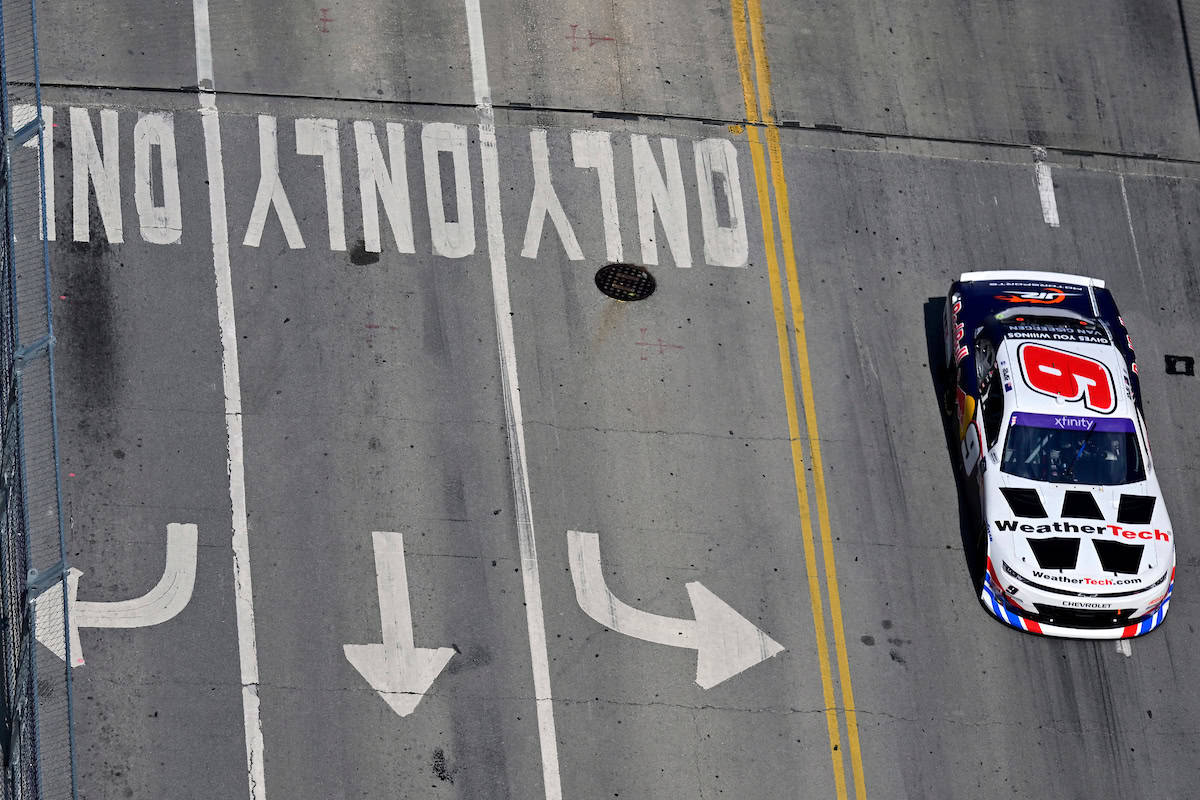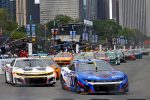NASCAR’s top two divisions tackled the streets of Chicago for the third time on July 5-6. It could also be the last time — at least for the foreseeable future. The original plan orchestrated by NASCAR and the city of Chicago called for three race weekends, held on a new temporary course that ran through Grant Park in the heart of the city. The races were first announced in July 2022, nearly a year before the inaugural event.
In that time, the concept of a Chicago street race was met with pushback from the city’s leaders, some of whom claimed to have been uninvolved in the negotiations and criticized the race as a bad deal for the city. Many of Chicago’s residents reacted with resistance as well, questioning the wisdom of shutting down major roads in the heart of the city around Independence Day weekend. Even NASCAR’s more traditional fans, (your author included), were skeptical about the quality of racing that bulky, lumbering stock cars would provide on narrow city streets with tight corners. NASCAR, however, forged ahead despite the doubts. The sanctioning body relished the opportunity to bring stock car racing directly to the people of a major American city.
To give NASCAR credit, the Chicago Street Race worked as a proof of concept. Despite unfavorable weather and logistical challenges, the sanctioning body demonstrated that there is viability in a stock car street race. That is not to say that the quality of racing on the Chicago course was always great, or that street racing should become a major part of NASCAR’s repertoire. What the race provided was stunning visuals, an engaging technical challenge for the drivers, and a level of accessibility to a city that no other track in NASCAR can truly match. In those respects, the sanctioning body accomplished its goal.
However, if you want to measure the success of the Chicago Street Race by how much it won over the locals, the picture is less rosy. The city’s leaders have been noncommittal to renewing their deal with NASCAR. If the sport was going to return to Chicago in 2026 and beyond, you would think that — based on the timing of the original announcement — a deal would have to come together soon. Instead, there have been persistent rumors that NASCAR is talking with other cities about potential street races, with San Diego at the top of the list. Another rumor, via Carson Hocevar over a live stream, is that NASCAR is returning to Chicagoland Speedway next year. None of these rumors have been confirmed by NASCAR, yet their spread indicates that the future of the Chicago Street Race is foggy at best.
More broadly, the rumors suggest that NASCAR does not consider the Chicago Street Race a permanent solution for getting its brand of racing in front of locals in a major city. It is certainly not a new challenge for NASCAR, whose style of racing was nurtured and still primarily embraced by rural America. Even during the sport’s boom years in the 2000s, the sanctioning body tried desperately to build a track on Staten Island in New York City, but fierce local resistance doomed the project from the start. Street racing offers the advantage of creating a track without building a track, giving NASCAR a gateway into Chicago 20 years later. Yet if the locals have not enjoyed what they have seen, it could make the Windy City’s Street Race a short-lived experiment.
If the street race does not return, NASCAR has the option to follow through on the Hocevar rumor and go back to Chicagoland. It would not be a bad option; Chicagoland hosted the NASCAR Cup Series for nearly 20 years and has all the infrastructure necessary to handle a large crowd.
The question is, how large of a crowd would show up? The track struggled with attendance in recent years, including a run of seven straight seasons where it opened the playoffs. Fans also criticized Chicagoland for a lack of compelling racing, being too similar to the other 1.5-mile tracks on the schedule, and how its location in Joliet was too far away from Chicago. The street race was supposed to fix all those problems by giving Chicagoans a unique race in the heart of the city that would excite the fans. NASCAR could pursue a return to Chicagoland if it wants, but the only real advantage in doing so would be maintaining a foothold in the Chicago market. A presence near the city might be worth it to the sanctioning body, but that’s uncertain for now.
Note that NASCAR was willing to step away from the Los Angeles market completely, at least for 2025. The preseason Cook Out Clash moved from the Los Angeles Memorial Coliseum to Bowman Gray Stadium, ending a three-year run that saw local interest decline with each season. The LA version of the Clash feels a lot like what could happen to the Chicago Street Race: a unique event that worked as a proof of concept, but one that ran out of steam once the novelty wore off. Facing an opportunity to bring the Clash to one of NASCAR’s ancestral tracks, and the uncertainty surrounding the former Auto Club Speedway site, NASCAR determined that staying in LA just to be in LA was not worth considering another option.
Perhaps a street race in San Diego can get NASCAR back to Southern California. Such an event would help expose stock car racing to a city where drag racing and road racing have traditionally reigned supreme. It would also sidestep the issue of NASCAR having to build another racetrack in Southern California, where the value of land makes no venue sacred.
On the other hand, NASCAR has not proved that street racing works as a long-term solution for any city. Suppose NASCAR holds a San Diego street race for three years, but then the novelty wears off again and the race does not return for 2029. Will the sanctioning body have a more permanent solution for Southern California by that time? Does the sport completely exit the market again? Maybe NASCAR is content to rotate a Cup Series street race to a different city every few years. While that would help introduce the sport to new audiences, would a lack of permanence for the event even create a dedicated fan base?
NASCAR deserves credit for experimenting with street racing in Chicago. The event undoubtedly worked better as a concept than a lot of people would have predicted. Yet it feels like NASCAR is still confusing popularity in major markets with being physically located in major markets. There is certainly value in the experience of visiting a city and watching a stock car race from the heart of downtown. But if the sport’s leadership is trying to use street racing as a mechanism for creating committed fans in the biggest cities of the United States, simply putting the race directly in the city for a few years has not proven to be an effective strategy on its own. More research is needed, in 2026 and beyond.
Bryan began writing for Frontstretch in 2016. He has penned Up to Speed for the past eight years. A lifelong student of auto racing, Bryan is a published author and automotive historian. He is a native of Columbus, Ohio and currently resides in Southern Kentucky.





